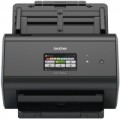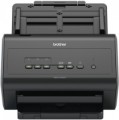— Wi-Fi. A wireless interface primarily used to build local computer networks. In many respects it is similar to the LAN described below (in particular, it allows using the scanner as a network device), but it compares favorably due to the absence of a cable and the ability to work directly through walls. In addition, relatively recently, Wi-Fi modules have appeared with the ability to directly connect between devices — for example, to control a scanner from a tablet and transfer processed materials to the tablet directly, without creating a computer network. However
scanners with Wi-Fi are quite expensive.
—
USB. Universal interface for connecting various peripherals to a computer, including scanners. Today, it is the most common port of this type; at least one USB input is provided by the vast majority of PCs and laptops.
—
SCSI. Universal interface for connecting computer peripherals; has a good speed, however, it is much less common than its analogues, besides it is considered obsolete and is gradually being replaced by other standards.
—
IEEE-1394. Universal port, in many ways similar to USB (see above). Provides higher speed than the most common USB 2.0, but is much less common.
-LAN. Connector for connecting various devices to a local computer network. A scanne
...r with this interface can be connected as a network device and used with it by any computer on the network, which can be especially useful in offices.The scanner has its own
display. Such displays can vary from simple indicators that display a minimum of service information (selected mode, work process, some errors, etc.) to full-colour touch screens that significantly expand the capabilities of the device. Anyway, the display makes the operation of the scanner more convenient and intuitive.

